Soil is one of the most sacred things on the planet–the soil is the foundation of all life on earth. The soil, including the living organisms in the soil, provides the basic conditions for plants to be abundant, to resist disease, and to withstand an increasingly volatile world. All life–including humans–depend on topsoil for plants to grow, and plants are eaten by various mammals, insects, birds, and so on, which are eaten by larger predators–and this all begins with the soil. 95% of human crops are also grown in soil–and here we get into the problems.

One of the more concerning challenges that we face presently is the entire globe has a soil problem and we are losing soil to erosion at unsustainable levels. Soil loss typically happens from erosion of wind and water–bare soils can easily run off into streams or be picked up by the wind (one reason not to have bare soil). Soil erosion caused by unsustainable agricultural activity began surpassing soil formation sometime in the 19th century–so at this point, we are seeing serious deficits in soil throughout the globe. In fact, the map on this page suggests that most of the world has serious issues with deeply eroded and degraded soils. Here in the US, we have already lost approximately 56 billion tons and it is eroding at least 25 times the natural rate. In many areas, peat bogs and fens are holding more carbon by volume than anywhere else on earth–and now these bogs and fens are also threatened by industrialization.
Beyond the obvious, this is particularly problematic because soil takes a very long time to form–Cho (2012) notes that it takes approximately 500-1000 years for 1″ of topsoil to form (which includes organic matter and a wide range of microorganisms). We can speed up that process with various soil-building approaches used in permauclture, organic gardening, and so on–but ultimately, we are all starting with very depleted soils.
Soil vs. Dirt
Dirt is a subset of soil. Dirt includes the basic building blocks of rock: clay, sand, and silt, which refers to different sizes of particles that are ultimately made from rock. Dirt is part of soil, but the thing that makes soil different is that soil is alive. Thus, soil contains sand, silt, and clay but also organic matter, bacteria, fungal hyphae, nematodes, anthropods, protozoa, and bacteria. In fact, a teaspoon of soil can contain anywhere from 100 million and 1 million bacteria!
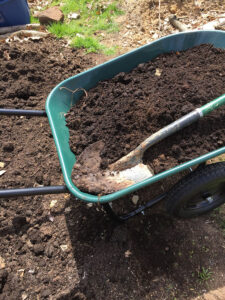
Soil is also incredibly complex, complex beyond present-day human understanding–only about 5% of microbes can be identified using conventional microbes. But I’ll share a bit about the basics so you can see how amazing it is. Soil contains organic matter, which may be dead or decaying plant or animal matter which is cycled and used by various soil flora and converted into nutrients that are available for the soil web. The soil web of life contains seven different forms of life: fungal hyphae, bacteria, archaea, amoebae, flagellates, beneficial nematodes, and anthropods. All seven forms of life rely on plant roots for sustenance and organic matter and all are part of the nutrient cycling processes which feed plants. This food web is a balanced web of these seven kinds of organisms. (I find it so fascinating that seven is such a sacred number in many traditions, and seven kinds of life are part of the soil web!)
Fungal mycorrhizal networks are amazing and function as a connective web with plants–70-80% of land plants form symbiotic relationships with fungi. Thus, these fungal hyphae (the branching white parts of fungus) are literally extensions of the plants, growing into places plants can’t reach, bringing water and nutrients to the plant (including phosphorous); the plant then provides the fungus with carbohydrates. The fungal hyphae also hold the soil together into “aggregates” which help prevent soil erosion and allow the soil to hold much more moisture. And of course, fungal hyphae form large networks across great distances, allowing plants and trees to communicate with each other.

Bacteria are single-celled organisms that live in the soil and multiply in favorable conditions (like wet and warm conditions). Bacteria and other very small organisms often live in the water that is contained in the soil. Nematodes are multi-celled, worm-like microscopic organisms that help regulate pests in the soil and regulate ammonium (a form of nitrogen). Soil arthropods (mites, spiders, beetles, and the like) help decompose and move organic matter, cycle nutrients, and support the regulation of various other microflora in the soil. These are just some of the amazing beings that make up soil.
As you can see, soil is an incredibly rich, sacred thing that allows life to function. Soil also teaches us important lessons of reciprocity–lessons that we need today. All of the beings that are part of the soil web function in harmony–the fungal hyphae giving what they need and taking what they need, not taking too much. We see these same kinds of processes throughout nature’s system. As humans are part of nature, part of our own evolution should be learning how to participate in and nurture these reciprocal processes.
Understanding Your Soil: Land Use and History
The first good step to nurturing soil is understanding your soil, and we’ll explore this in a few directions. You can apply what I’m saying here to a backyard garden, a community garden, or a larger piece of land.

It is very important to understand the history of your land for a few reasons. First, consider the situation historically: When was your home or residence built, under what conditions, what was present on the land before you were there? Talk to people who lived there before, and try to see if you can understand the land’s history. If you are in the United States, you can go to the USGS Geological Survey site and use their TopoMaps program. This allows you to download present and historical topographic maps that can show you the land use practices dating back, in some cases, to the 1960’s. You can see the various geological activity, mines, agriculture, and other things. This can help you understand more about what the history of land use was and how that may have impacted the soil.
Second, understand what construction has happened and when: what often happens in modern construction is that for new construction, topsoil is removed (and packaged and sold, rendering the soil web lifeless), and so if you purchase a home, you are actually often sitting on subsoil. If you have any kind of construction, they often will steal away the topsoil to profit from and sell and not even tell you that they did it. Look any new construction and you will see this–a barren landscape with a house and all subsoil. This also happened to my parents–the township stole almost an acre of their land, cutting down trees and destroying the life, using eminent domain to put in a new septic line. Even with them watching, the township’s crews removed all of their topsoil and replaced it with mining slag–very rocky and clay-filled subsoil, where no life can grow. We tried scattering seeds there and they could not take root in this awful subsoil. Replacing even 3″ of topsoil, will cost over $15,000. This happens every day.
Understanding Your Soil: Soil Test and Soil Jar Test
Soil tests can offer you some basic insights on the nature of what is in your present soil and how depleted it is: how much organic matter is in the soil, how the different basic nutrients are balanced, any deficiencies, your soil PH, cation exchange capacity, and so on. These tests can help you understand where you are from a baseline and how to improve the soil. If you are in the US, a State Extension office can usually offer you low-cost soil testing so that you can have some basic idea about your soil and what it offers. Their testing is often better and more comprehensive than the at-home kits you can get. But you can also purchase relatively inexpensive home tests that can at least tell you how much nitrogen (N), phosphorus (P), and potassium (P) you have in your soil, which are considered three of the most important nutrients. These tests often also tell you about your soil PH.
Once you have a sense of this, you can work to remediate the soil so that more things can grow effectively. Here are some simple organic remedies:
- PH too high or too low: Add organic matter. I had this problem in Michigan; my soil was highly alkaline, coming in at PH 8.5 – 9 in various parts of my property. This meant that I couldn’t add any wood ash, but I could add as much leaves, cow manure, worm castings, pine needles (which are slightly acidic, good in my case), home-made compost, chicken compost, and anything else I could get my hands on.
- Low Calcium: Calcium is a critical nutrient, particularly for nightshades like tomatoes (if you don’t have enough calcium, you can get blossom end rot). One of the things you can add (if your soil PH is acidic) is wood ashes (from clean wood, such as that you’d burn in a woodburning stove for heating or cooking). Wood ash contains approximately 5% potassium; 25% calcium; 2% phosphorus, and 1% magnesium. Other options here are crushed eggshells, bone meal, and lime (lime also adds magnesium and phosphorous).
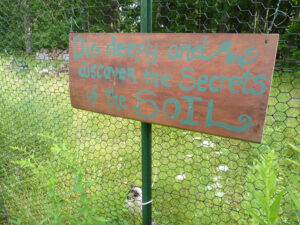
A reminder of the sacredness of soil- sign hanging in the garden - Low Nitrogen: Plants can’t function without nitrogen–nitrogen deficiency has plants turning from dark green to yellow-green and eventually yellow; this significantly impacts the health of the plant. The good news is that lots of things contain nitrogen: composted chicken manure, coffee grounds, grass/yard clippings, seaweed, fish emulsion, blood meal, and even nitrogen-fixing plants such as peas, beans and clover. Not to mention your own liquid gold!
- Low Potassium: Potassium is another critical nutrient–often, if you see plants that are wilting easily on sunny days, this usually signals that the soil does not have enough potassium. You can add potassium by making a variety of liquid fertilizers: you can do a simple ferment of comfrey, bracken fern, or dandelion (you need several pounds in order to make this successful). You can also add coffee grounds, banana peels (if you can get them in quantity), or hardwood ash.
- Low Phosphorus: Low phosphorus in the soil may include leaves that are smaller, curled, die back, or even have darker green young leaves with purple veins on the underside. Chicken and horse manure are both high in phosphorus, as are worm casings, bone meal, lime, fish emulsion, or a good organic compost.
The Soil Jar Test. To find out how much sand, clay, and silt you are working with in your soil, you can perform a simple soil jar test. Dig down 6″ into your soil and get 1-2 cups of soil and subsoil. Break it up well if it is compacted as much as you can (this might mean letting it dry out for a few days in the sun and then breaking it up that way). Place this in a quart mason jar and fill with water to the top, leaving about an inch or so to shake it. If you have animal helpers, this is a good time to enlist their help. Shake it very well.
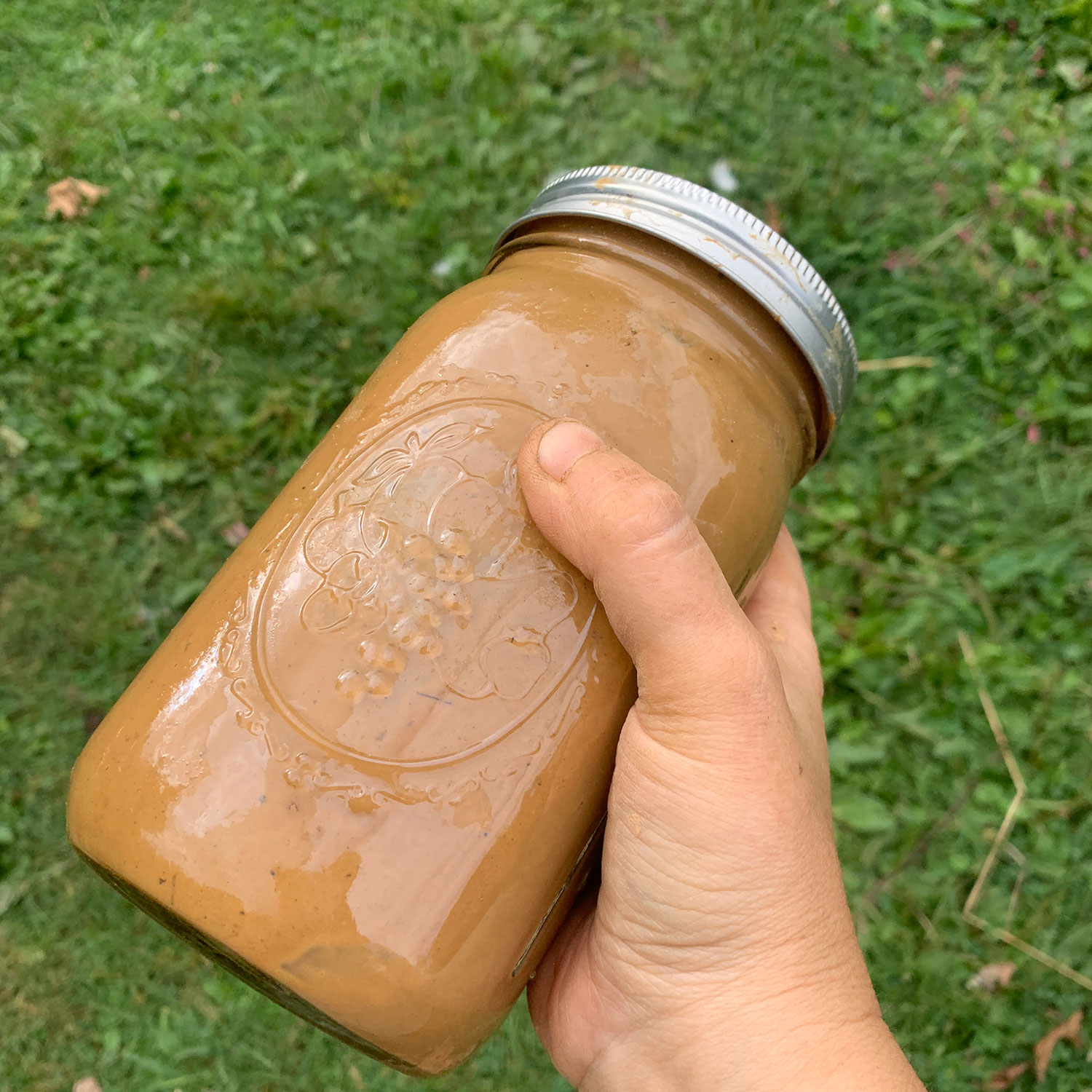
Now, let your jar sit somewhere undisturbed for 24 hours. The sand (a large grain particle) will immediately sink to the bottom, within a few minutes. Mark this with tape or a marker if you can, or mentally note where it is. A layer of silt (a medium-sized particle) will settle on top of the sand in about 30 min. You should again mentally note where that ends. Over the next 24 hours or so, the clay (a very fine-grained particle) will settle out of the water. You will also see any organic matter floating at the top of the jar.
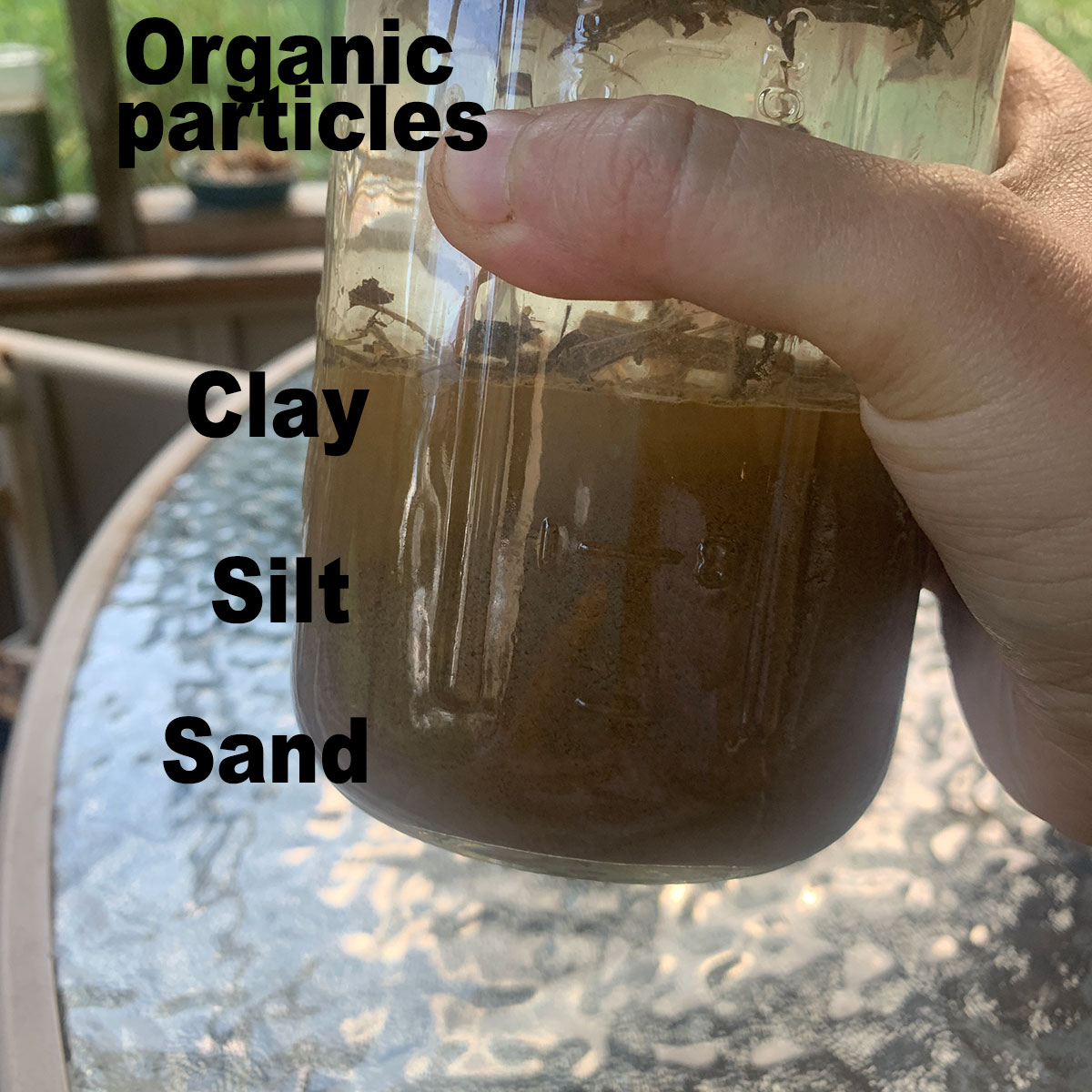
You can look at these ratios as a way to determine your soil composition: sandy soils drain very quickly, while soils heavy in clay retain moisture longer, but often stick together. What is considered the best balance is 40% sand, 40% silt, and 20% clay, this is called a loam. I’ve never had such a balance in my soils, and I was still able to grow many things.
Observing and Interacting
Beyond the tests I’m sharing here, you can also simply spend time observing your soil and the life in and around it. What color is your soil? When you dig into it, do you see roots, mycorrhizal fungi, worms, and other features? How does the soil energetically feel to you? What are you observing with your plants as the growing season continues forward?
Problems with nutrient deficiencies often don’t come up till mid-season; everything is going well and then suddenly your whole garden is yellowing or drooping. Sometimes you can’t remediate soil in the middle of a growing season, and this is why soil tests in advance can be so important. I felt like I learned this lesson and then in the last few years, we were pretty busy and didn’t do a soil test–this year, we have some soil issues and some of them can be remediated, and some cannot and are drastically impacting our yield. Hence, my own writing and meditating on the topic: the good reminders for caring and building healthy soil.
Conclusion
This post is getting lengthy, so in my next post on this series (in two weeks), I plan on talking about some larger-scale methods for soil building such as hugelkultur, biochar, innovative methods of composting, and then we’ll move on to ceremonial, meditative, and sacred practices with soil and the soil web of life!


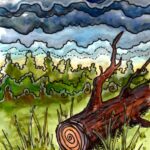

[…] Secrets in the Soil: Understanding the Soil Web of Life […]